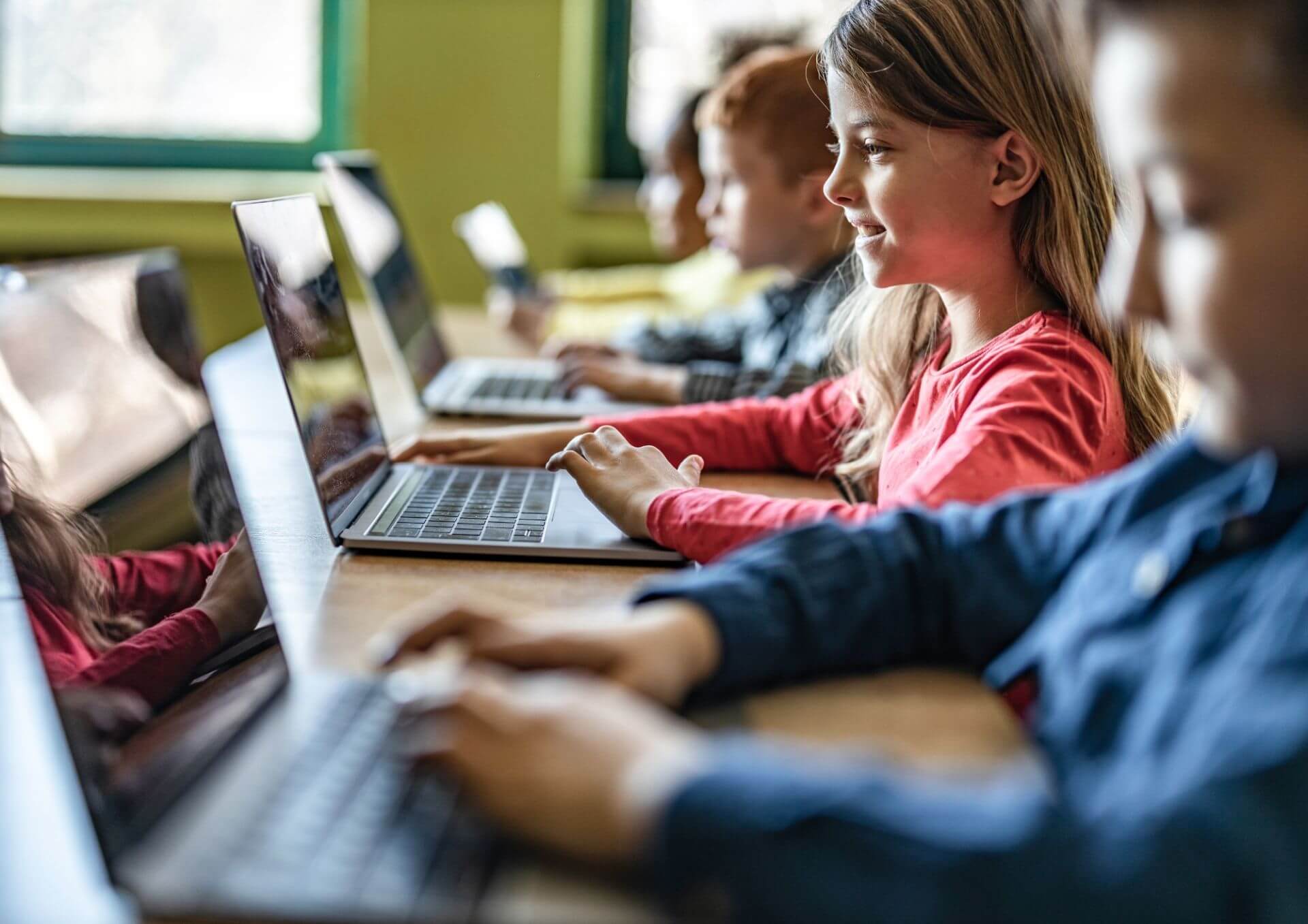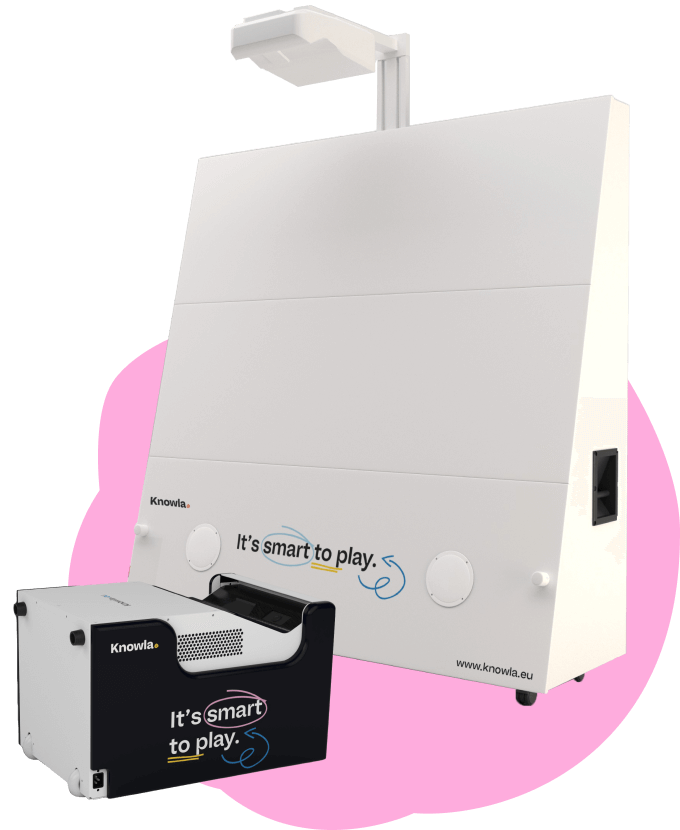Phones, artificial intelligence (AI), 3D printers, computers, projectors, whiteboards and interactive monitors…. Technology in classrooms is present, but often pushed into a corner in favor of traditional teaching materials. Quite often, voices are also raised in society about banning phones in school or the opportunities and dangers of AI. Children are said to be simultaneously nose-to-nose on their phones, yet lack advanced digital competencies. So how do we find our way through all this confusion?
One would like to answer: with the head.
We can’t get away from technology
Technology surrounds us from all sides. Thanks to it, we are able to work faster and more efficiently. It has also made it perform certain duties for us. It has become a useful tool that accompanies us every day. And this is worth emphasizing: A TOOL whose wise use is already up to us.
Nor will the future generation escape from technology. What’s more, it will probably receive more and more advanced solutions. It grew up among phones and tablets, but it is incumbent on us to point out how to use them. The problem only arises when we ourselves don’t know what to recommend to a young person, so we hide the devices from them.
Total bans on phones in schools will not accomplish much. Not without proper education on the rules of technology use. The student will not know how to take care of digital hygiene, how to use technology wisely, he will learn critical thinking only in theory. He won’t ask himself why it’s sometimes worthwhile to be in irl (English means as much as to be in real life, not in the digital world), so he’ll pull out his phone after school and stare at it mindlessly for the rest of the day.
Also, it will be much more responsible to bring technology into the classroom and explore together the possibilities it offers. And within the framework of digital hygiene or modern social conventions, show that putting down the phone as part of an important lesson or exercise is not the end of the world and allows you to accumulate new experiences and enrich relationships.
Artificial intelligence is a shortcut and a doorway to new opportunities
Artificial intelligence has dominated the space around technology. It has provided opportunities for effortless preparation of homework and essays. It has also opened the door to a variety of improvements, opportunities or other content preparation.
It is a useful tool, but imperfect and far from it. Certain things are not and may never be within its reach in the near future. On the other hand, if someone asks me if artificial intelligence will replace jobs, I have three answers: Yes, No and Somewhat. And what’s interesting is that all of these answers are true.
Yes. There are some duties that can be performed independently by artificial intelligence. Even here, however, there is light at the end of the tunnel, as new professions and necessary competencies are emerging. After all, someone has to operate AI and prompt it appropriately (that is, type commands for AI to execute). This is also an art! One needs to be able to determine the purpose and preparation of the material and communicate it appropriately. There is also an important issue of critical thinking skills here, because the prepared content needs to be checked, filtered and adjusted for its needs.
Don’t. There are many things that artificial intelligence will not do for us, or these activities are done for other motives. Take artists. Yes, artificial intelligence will generate a picture or text, but will it allow the artist to express his emotions? Communicate its thoughts about the world? Is the art viewer only looking for pretty pictures and a schematic plot? Not necessarily.
In a way, it’s a hybrid model, where we use artificial intelligence to streamline our work. We outsource to it what is repetitive, what we don’t have time for or like least, and we can tackle topics we are passionate about.
In educational work with artificial intelligence, it is therefore worth focusing on, among other things:
- artificial intelligence and machine learning operations
- types and capabilities of various programs
- Preparation of prompts, including effective communication, formulation of: goals, conditions, methods, expectations, etc.
- think critically and verify content
- copyrights
- The possibilities of using AI in everyday work
There is also an interesting manual for teachers: https://zpe.gov.pl/ai-przewodnik-dla-nauczycieli
Technology not only in computer classes
In my time, computers were only in the computer room, and sometimes one of the teachers brought a tape recorder or projector. I even remember such a film projector. Nowadays, in many classrooms we are spotted with a variety of devices that can add variety to classes and engage/interest students. Where and when remains an open discussion.
Technology should not depend on the subject. There will be a place for it in any field. All that needs to be done is to decide what device and software will best suit the working methods of a particular teacher, and the specifics of a particular classroom. There’s no need to force yourself to do what you don’t feel, but it’s worth daring to try new things or develop your own digital competence.
There are projection capabilities, quizzes, games, interactive apps, VR, print and many others in free and paid versions. Each of these tools can be used in a variety of ways, after all, nothing prevents you from tailoring them to your own needs and the subject matter of your classes. No one said you can’t instill a drawing wheel in physical education classes or print a 3D model of a heart in biology classes.
Digital competence of young people
Young people will navigate the meanderings of the digital space much more efficiently. They’ll set you up with a Facebook account. They’ll Google something for you. They’ll suggest a tutorial video. They’ll show you the latest trends on TikTok. But that doesn’t mean they are highly digitally competent.
The myth of “digital natives” is debunked by research. The digital skills of young people are quite superficial and they are not doing so well where, among other things:
- content analysis is needed
- you need to be critical of the content presented
- you need to use office tools or other programs more advanced than the simplicity of social media or basic browsers
- take care of your own safety online.
All these areas can be taken care of as part of the daily work with technology in lessons.
Several reports:
- https://digital-skills-jobs.europa.eu/en/actions/national-initiatives/national-strategies/poland-digital-competence-development-programme
- https://cyberdefence24.pl/cyberbezpieczenstwo/znamy-wyniki-testu-umiejetnosci-cyfrowych-w-polskich-szkolach-nie-jest-najlepiej
- https://digitalpoland.org/publikacje
- https://fundacja.orange.pl/strefa-wiedzy/badania-raporty
Digital hygiene and netiquette
As we noted above, young people need to be educated on the subject, but this is a common problem in both adults and children, who adopt certain behavioral patterns through the observation of parents and teachers. The aforementioned rule regarding putting the phone away for important lessons can fit nicely into netiquette and digital hygiene, while also setting an example of positive social behavior.
Digital hygiene will include those activities related to taking care of our security, privacy, physical and mental health in the context of technology use. It will also include, among other things, limiting the amount of time we spend in front of a screen, the number of notifications, taking care of our own data or account security.
A guide to digital hygiene: https://www.gov.pl/web/nauka/higiena-cyfrowa-i-cyberbezpieczenstwo–nowy-poradnik-mein
Related to digital netiquette will be all those behaviors that make us better at interacting with each other in the virtual space. Given that young people have a strong presence in social media or cooperative games, it’s crucial that they know how to behave there. Such will probably be the most talked about topics, such as cyberbullying, hate speech and cyberbullying.
School should prepare students for adulthood and to function in society, so these two issues are extremely important for them to master.
A bit about Knowl’s solutions
Knowla’s solutions support students in developing a variety of skills through technology-enabled play. Knowla Box and Knowla Wall devices are available to display eye-less images thanks to Epson projectors.
They pull from the benches and encourage movement through their interactions. Students can train their fine motor skills by writing with a marker, or they can exercise their whole body by throwing balls.
They also encourage integration or social interaction. On Knowla devices, you don’t have to learn through play alone. The whole group can work on the device and solve problems together. Working on the devices gives students proficiency, and each of their achievements will be recognized.
Knowl’ s Educational Universe includes many apps that cover a variety of competencies including 21st century competencies (including critical thinking, problem solving, inference, analysis) or breadth of knowledge, so they can be used in many subject classes. In an interactive way and using gamification, they encourage learning. They engage students in working on their own educational future.


